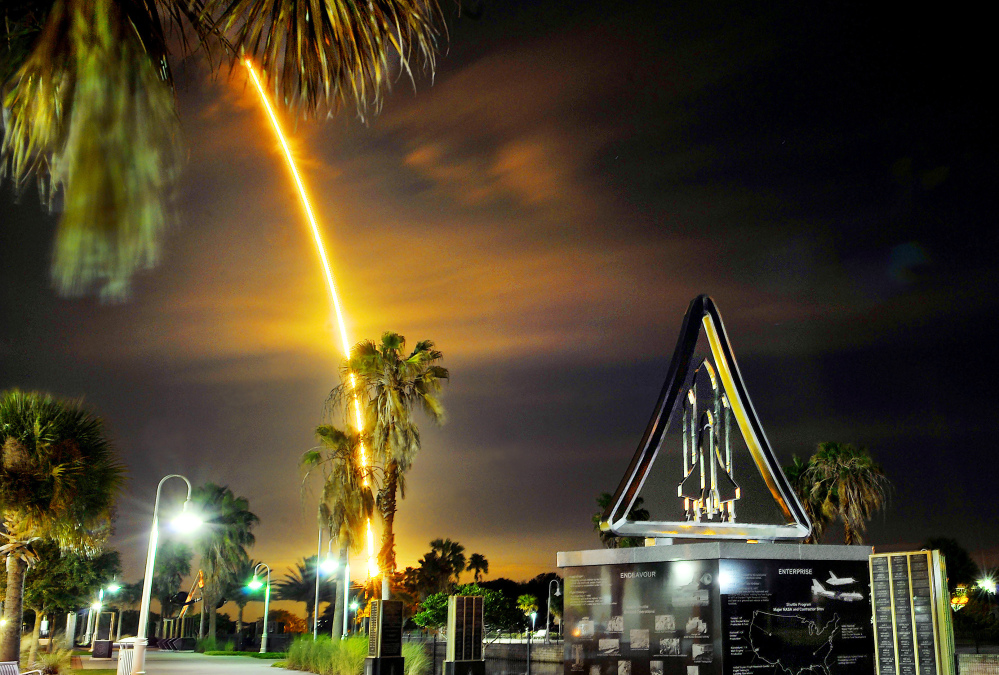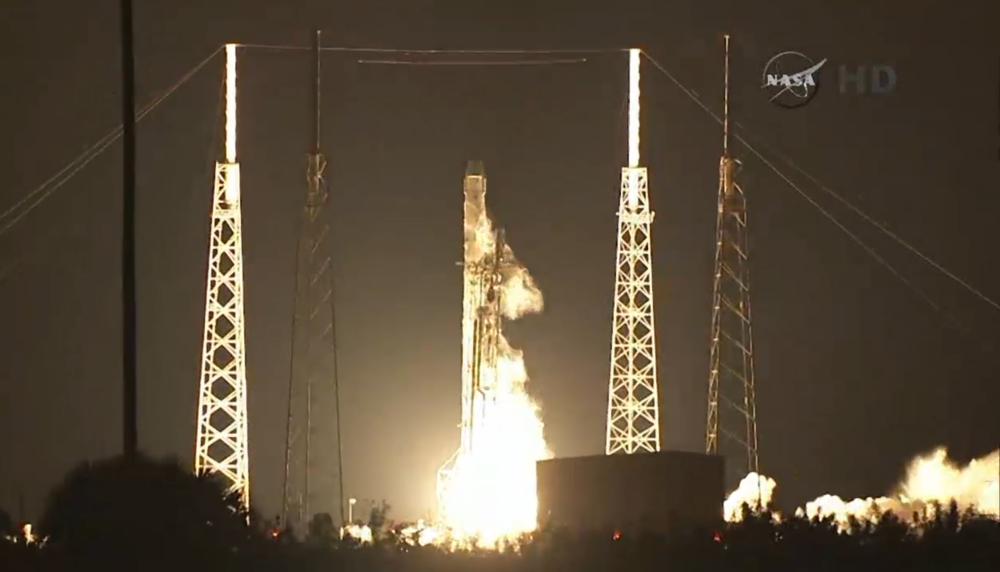CAPE CANAVERAL, Fla. — SpaceX pulled off another successful launch of supplies to the International Space Station on Saturday, but its revolutionary attempt to land the leftover booster on an ocean barge fared less well.
The company’s billionaire founder Elon Musk said the first stage of the unmanned Falcon rocket made it to the platform floating a couple of hundred miles off Florida’s northeastern coast. But the booster came down too hard and broke apart, he said.
“Close, but no cigar this time,” Musk said via Twitter. He said it bodes well for the future, though.
It was the first time anyone tried anything like this. Musk maintains that recovering and reusing rockets is essential for bringing down launch costs and speeding up operations.
The primary mission for SpaceX was delivering more than 5,000 pounds of supplies ordered up by NASA, including hasty replacements for experiments and equipment lost in the destruction of another company’s cargo ship last fall, as well as extra groceries. Belated Christmas presents were also on board for the six space station astronauts.
“Hurrah! A (hash)Dragon is coming to visit bringing gifts,” Italian astronaut Samantha Cristoforetti said in a tweet from orbit.
Without interfering with the $133 million delivery, Musk had fins for guidance and landing legs installed on the first stage of the rocket, and positioned a modified barge off the coast of Jacksonville. A ship with SpaceX staff watched from a safe 10 miles away as the booster approached the platform, marked with a giant X.
Musk reported that the platform itself – 300 feet by 100 feet, with wings stretching the width to 170 feet – was fine after the attempted touchdown. But he said some of the equipment on deck will need to be replaced. There ended up being no good video of the “landing/impact,” he said in a tweet, noting it was “pitch dark and foggy” out in the ocean.
“Will piece it together from telemetry and … actual pieces,” he said.
Brief TV images from booster cameras, broadcast by NASA, showed water bubbles.
In the weeks preceding the landing test, Musk had estimated there was a 50-50 chance, at best, that the Falcon’s first-stage booster would land vertically on the platform.
Once separated from the upper stage of the rocket, the main booster re-ignited as planned for the flyback, according to SpaceX. Automatic engine firings maneuvered the booster down toward the autonomous, modified barge. The Air Force maintained the ability, as always, to destroy the booster if it strayed off course.
NASA watched the post-launch drama with keen interest, but its biggest focus was on the Dragon racing toward the space station. The capsule is due to arrive there Monday.
The shipment – the sixth by SpaceX since 2012 – is needed more than usual because of the recent loss of another company’s supply ship.
Orbital Sciences Corp.’s Antares rocket exploded seconds after liftoff in October, destroying the entire payload and damaging the Virginia launch complex. That rocket is grounded until next year.
This SpaceX delivery was supposed to occur before Christmas, but was delayed by a flawed test-firing of the rocket. Then a problem with the rocket’s steering system cropped up at the last minute during Tuesday’s initial launch attempt.
NASA is paying SpaceX and Orbital Sciences to keep the space station stocked in the wake of the retired shuttle program.
The $1.6 billion contract with SpaceX calls for 12 flights; the $1.9 billion contract with Orbital calls for eight.
Send questions/comments to the editors.




Success. Please wait for the page to reload. If the page does not reload within 5 seconds, please refresh the page.
Enter your email and password to access comments.
Hi, to comment on stories you must . This profile is in addition to your subscription and website login.
Already have a commenting profile? .
Invalid username/password.
Please check your email to confirm and complete your registration.
Only subscribers are eligible to post comments. Please subscribe or login first for digital access. Here’s why.
Use the form below to reset your password. When you've submitted your account email, we will send an email with a reset code.